When I first learned to dive in Ontario, it wasn’t because of my particular interest in cold murky lakes. It was simply because I loved being under the water. Yet here I am over ten years later, back in my hometown ready to explore the underwater offerings of Northern Ontario, particularly around the prolific lake region of Temagami.

When it comes to getting outside and immersed in nature, Ontario is at the top of the list. The province is a wilderness expanse of lakes, rivers and forests as far as the eye can see. Towards the north, Ontario is home to some of the most peaceful and serene bodies of water imaginable.
Located along highway #11 north, Temagami is the gateway to Ontario’s great northland. The natural beauty of this area is absolutely breathtaking. The township of Temagami is known as n’Daki Menan, the homeland of the area’s First Nation community. The name itself Te-MAWG-a-mee is Ojibway for “deep water by the shore”.
Within the Temagami region, there are more than 200 named lakes across 25 geographic townships. These lakes are situated across two watersheds – the Ottawa River and the Great Lake basin. The largest by size and volume is Lake Temagami, from which the area retains its name. Other significant lakes include. Cross Lake, Net Lake, Gull Lake, Obabika Lake and Rabbit Lake.
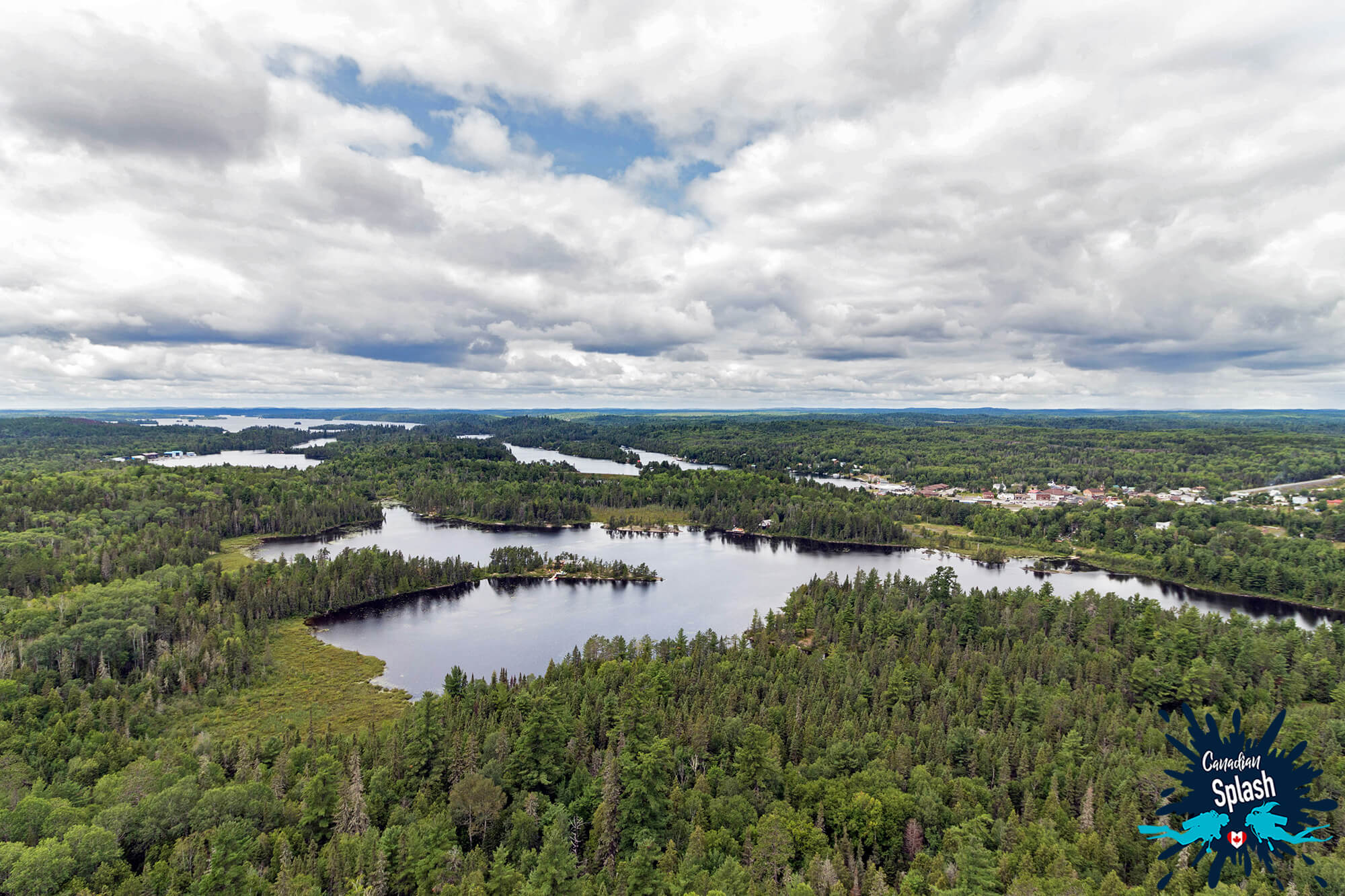
As a true adventurer’s mecca, Temagami is fueled by outdoor activities such as canoeing, backcountry hiking, camping, fishing and snowmobiling. With the lakes being at the heart of this location’s tourism and recreation, scuba diving is also an activity worth exploring.

Although there is little information on good dive sites within the Temagami vicinity, here are some notable shore diving locations that can be visited:
Lake Temagami is a huge sprawling lake made up of inlets, channels and arm-like spurs jetting out from its center. It covers 45 kilometers north to south and 35 kilometers east to west. Some of the main fish species include walleye, bass, trout, pike and perch.
Finlayson Point is a 47-hectare Ontario Park nestled along one of the lake’s many peninsulas.
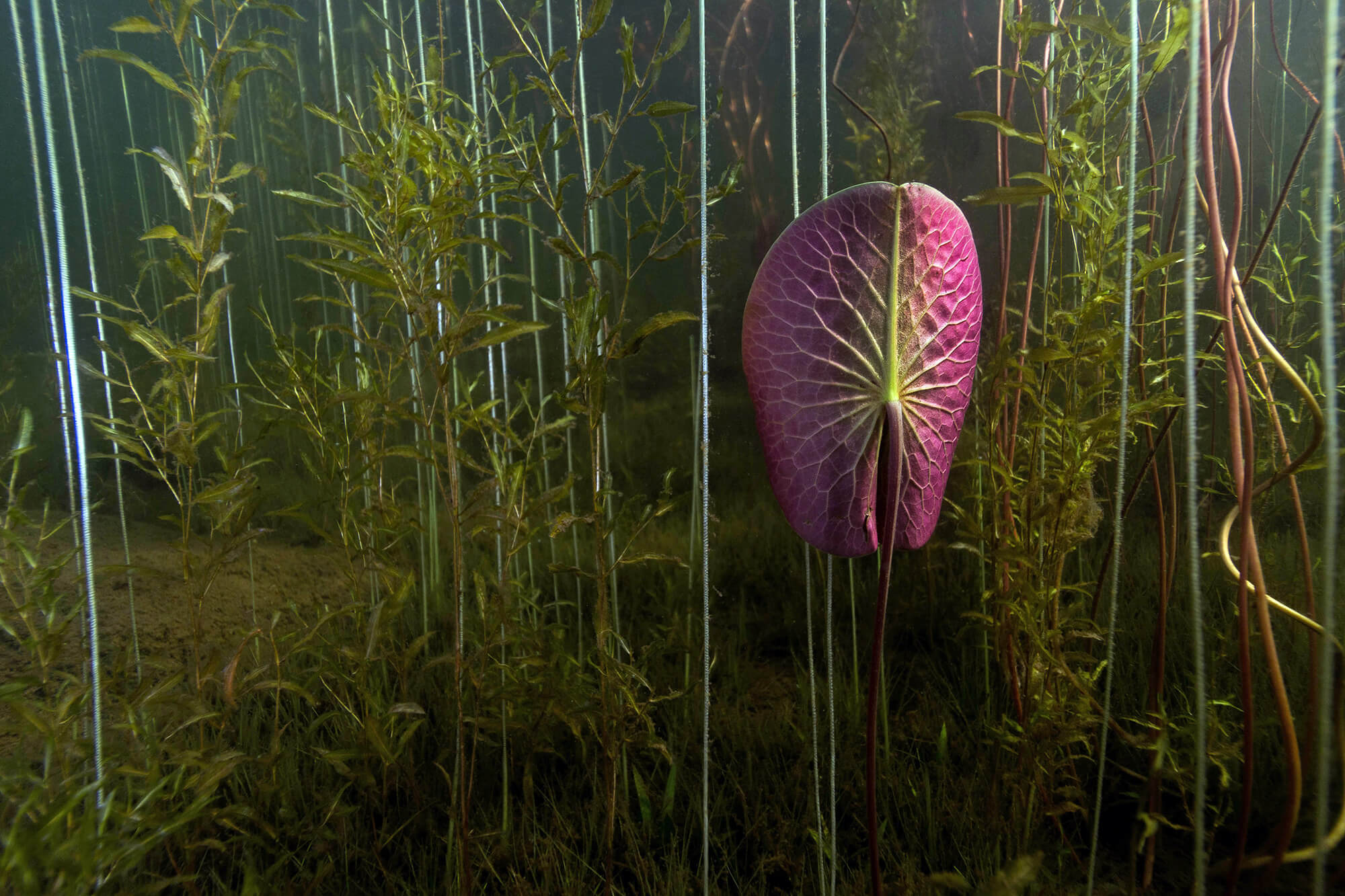
Exploring and Scuba Diving Ontario’s Provincial Parks: Ontario Parks is a leader in outdoor immersion in nature and its hundreds of thousands of lakes make it a real treat for those who love the water. If you’re a scuba diver you should definitely explore some of the Park’s most intriguing dive sites.

In order to scuba dive Finlayson, we opted to dive from one of the park’s beaches, where we knew the lake bathymetry had a ledge-like drop-off. We also carried with us a surface marker because of the active presence of boats cruising along the surface. Swimming through the darkness of Finlayson’s Lake Temagami, I enjoyed a sheer rock wall descending down 12 meters (40 feet) to muddy benthos. The bottom was framed with the occasional length of sunken timber. The visibility ran for about 4.5 meters (15 feet), making it somewhat of a dark and green feeling dive site.
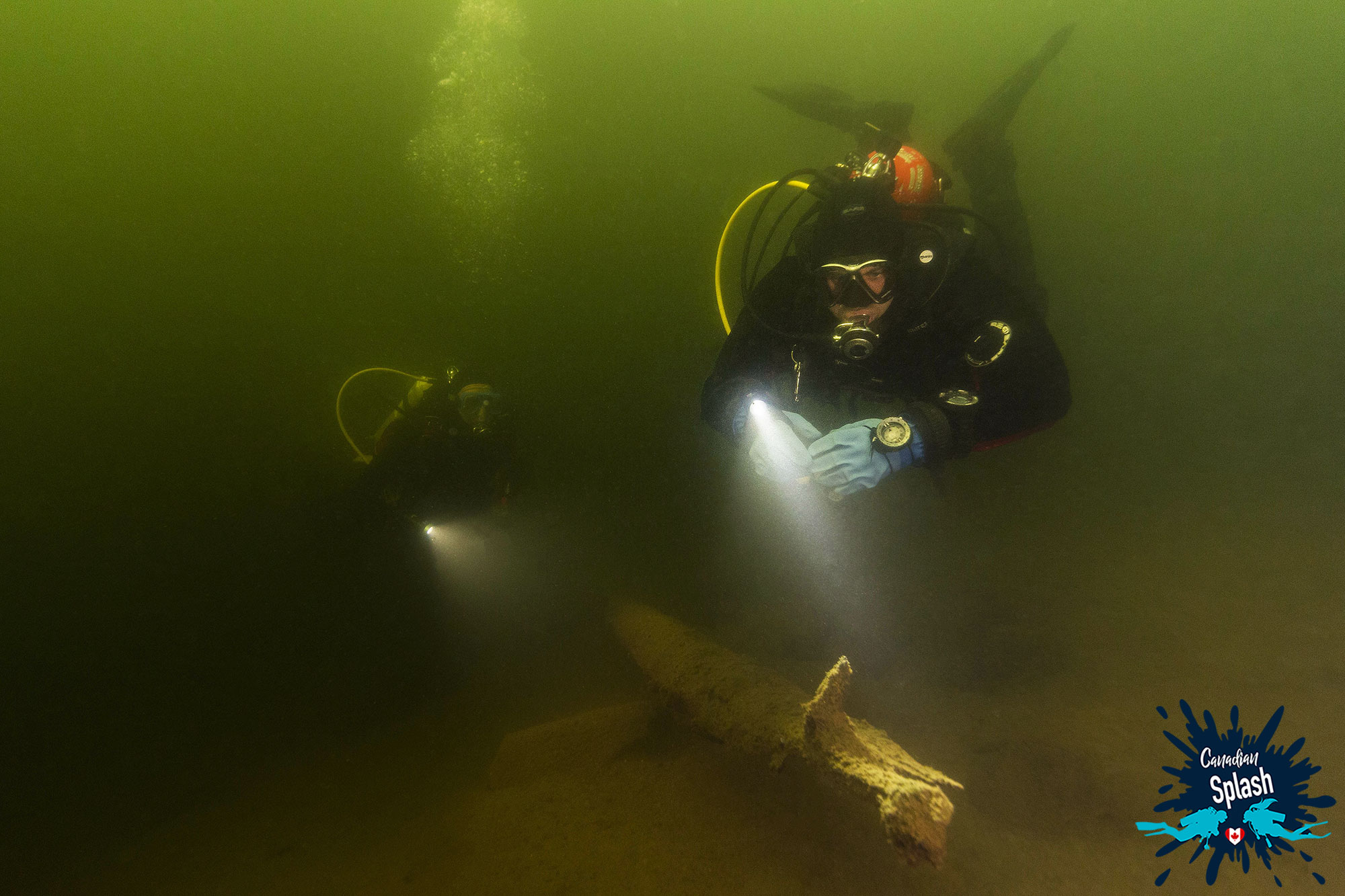
At depth, the lake was pretty quiet. The biggest source of animal entertainment came from the flurry of freshwater shrimp along the cracks of the rock wall. They were dainty, translucent and seemed to love the brightness of our dive lights. The shrimp ranged from a fingernail to a finger’s length in size and seemed to dance single file along the rocks.
As we rose above the thermocline, minnow and bass circled in the plant clogged shallows. The first 1.5 meters (5 feet) of water was easily the busiest most species-rich section of the dive. I watched as several fish darted left and right in full-fledged hunting mode. I floated and observed this fishy feast for several minutes before progressing through the lily pads and weeds, creating a vibrant green wetland jungle.

Where to Dive in Finlayson Point Provincial Park
GPS Coordinates: 47.057410, -79.801359
Address: 24 Finlayson Park Rd, Temagami, ON P0H 2H0, Canada
Dive from the beach and head left around the point.
Rabbit Lake is a “Y” shaped body of water consisting of a single basin. The lake has a perimeter of 105 kilometers (65 miles), a maximum depth of 43 meters (140 feet) and is still home to pike, walleye, trout, whitefish, perch and bass. Rabbit Lake is the largest and southernmost, in a chain of lakes that lie within the township of Askin, Riddell and Eldridge. The lake is fairly quiet dotted with cottages, and on its western shore exists the Rabbit Lake West Conservation Reserve, a 491-hectare area untouched by logging.
We dove Rabbit Lake from the main boat launch. Because of the excess boat traffic, our group of three entered and exited the site relatively quickly and made it a point to carry a safety buoy to mark our positioning underwater. Immediately after submersion, the brassy tones of the lake filled my mask and gave the lake a warm rustic feel.

Following the cusp to the shoreline, we dropped down 4.5 meters (15 feet). The bottom of Rabbit Lake was a mixture of mud paired with sprigs of vegetation. Because of this, we exercised caution when moving about to not stir up the fragile coating of silt. One careless fin kick would leave us blind in a tornado of mud.
Slowly we moved deeper passing rocks and large pieces of timber. These fragments seemed to come jetting out of the dark waters like unexpected spears. The sunken logs had me constantly swiveling my head back and forth to avoid accidentally swimming into one. While swiveling my head I was also able to catch sight of movement at the edge of my vision range. Never approaching too close, the occasional fish seemed to flit their scaly tail in the distance.
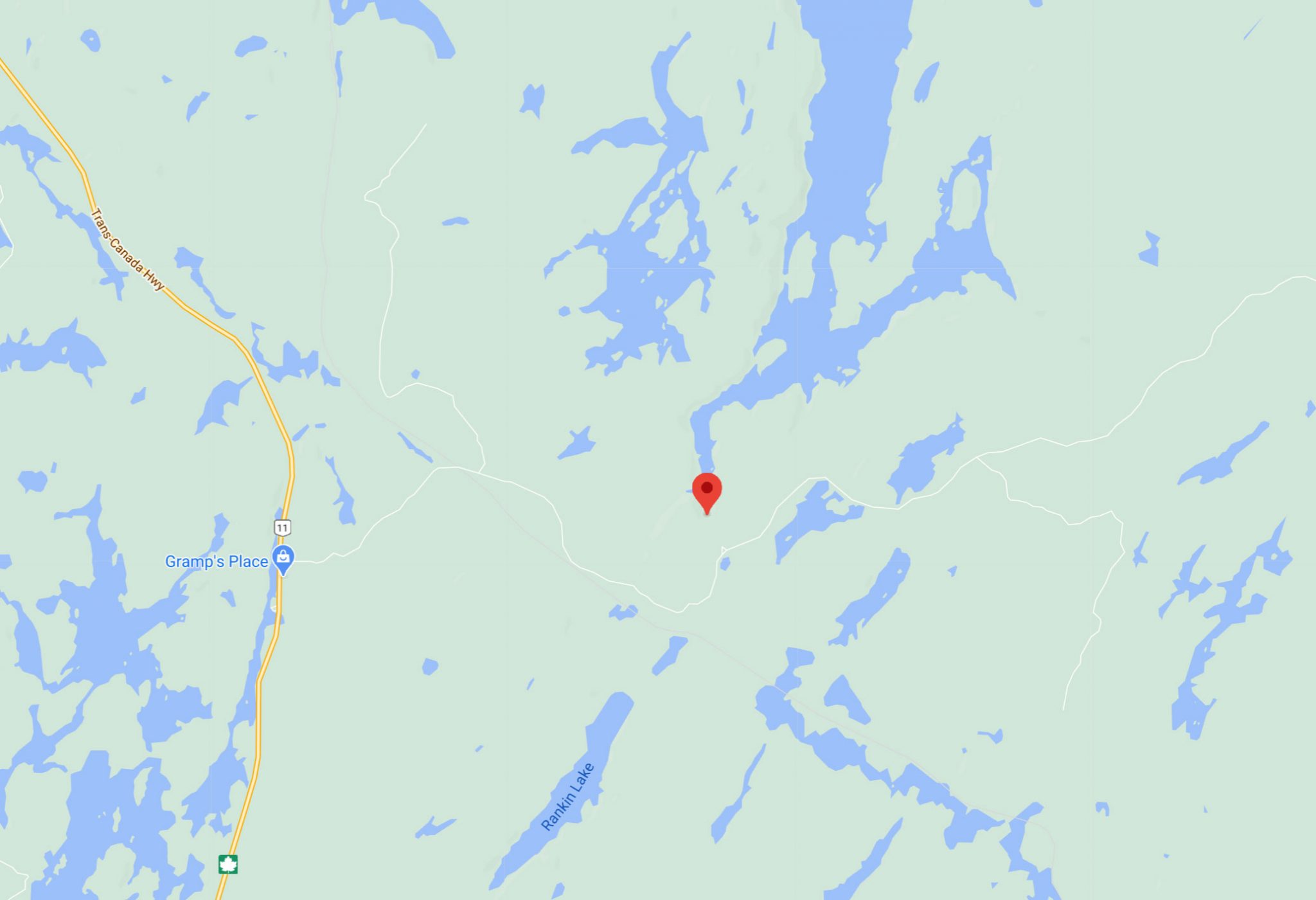
Where to Dive the Rabbit Lake Boat Launch
GPS Coordinates: 46.925018310546875,-79.6865005493164
Address: 24 Temagami, ON, Canada
Dive from the boat launch. Enter at the ramp and head across the bay. Follow the shoreline opposite the docks.

Turtle Lake is an east-west trending lake within the township of Strathy. The lake lies amid the Sherman Mine property, an abandoned open-pit iron ore mine, in operation from 1968 to 1990.
This small lake, where the entire perimeter of shoreline is well within sight and walking distance, affords transparent emerald coloured water, relatively shallow depths and some interesting finds. One spot of interest is along the southern shore of Turtle, where an abandoned jack ladder used for floating logs to the former Milne sawmill was left.
Accessing the Turtle Lake dive site via dirt road, we were able to pull up and park right beside the water, entering at a relatively flat beach-like entrance. Wading into the clear water I could see that for the most part the bottom was made of small chunks of gravel. A fine film of powdery silt topped the lake’s gravel bed and with every step I took the mud seemed to poof up into a cloud of dust.
Thanks to the rocky composition of the surrounding geology, the lake water was surprisingly clear and had a beautiful emerald tinge. Submerging underwater, our team of divers kicked along Turtle Lake’s sloping bottom following a curving track. The track was easy to see and follow, as this was likely the path mining vehicles took to access the dig site. The lake leveled off at 4.5 meters (15 feet) where we were joined by a school of curious bass.

The grouping of bass came in all different sizes, with some of the largest measuring approximately 0.5 meters (2 feet) from tip to tail. Circling our bubbles the big guys alternated between approaching within touching distance and searching for food. Our group had several dive lights and the bass seemed entranced by the beams. Still, I was impressed by their lack of fear for people.
Beyond the fish, towards the right side of the lake, we unexpectedly found a mini forest of deceased deciduous trees. The trees were anchored upright in the bottom with darkened – almost black – water sloped branches and trunk. Their empty finger-like branches seemed to claw toward the surface. Given the 4.5-9 meters (15-30 foot) depth that seemed to be the standard in this lake, the trees were not big, but they did give the area an eerie appearance.

Where to Dive Turtle Lake
GPS Coordinates: 47.059889, -79.840222
Address: Turtle Lake, Temagami, ON, Canada
Dive from the rocky pull-off beside the dirt road. Head right to find the sunken tree forest.
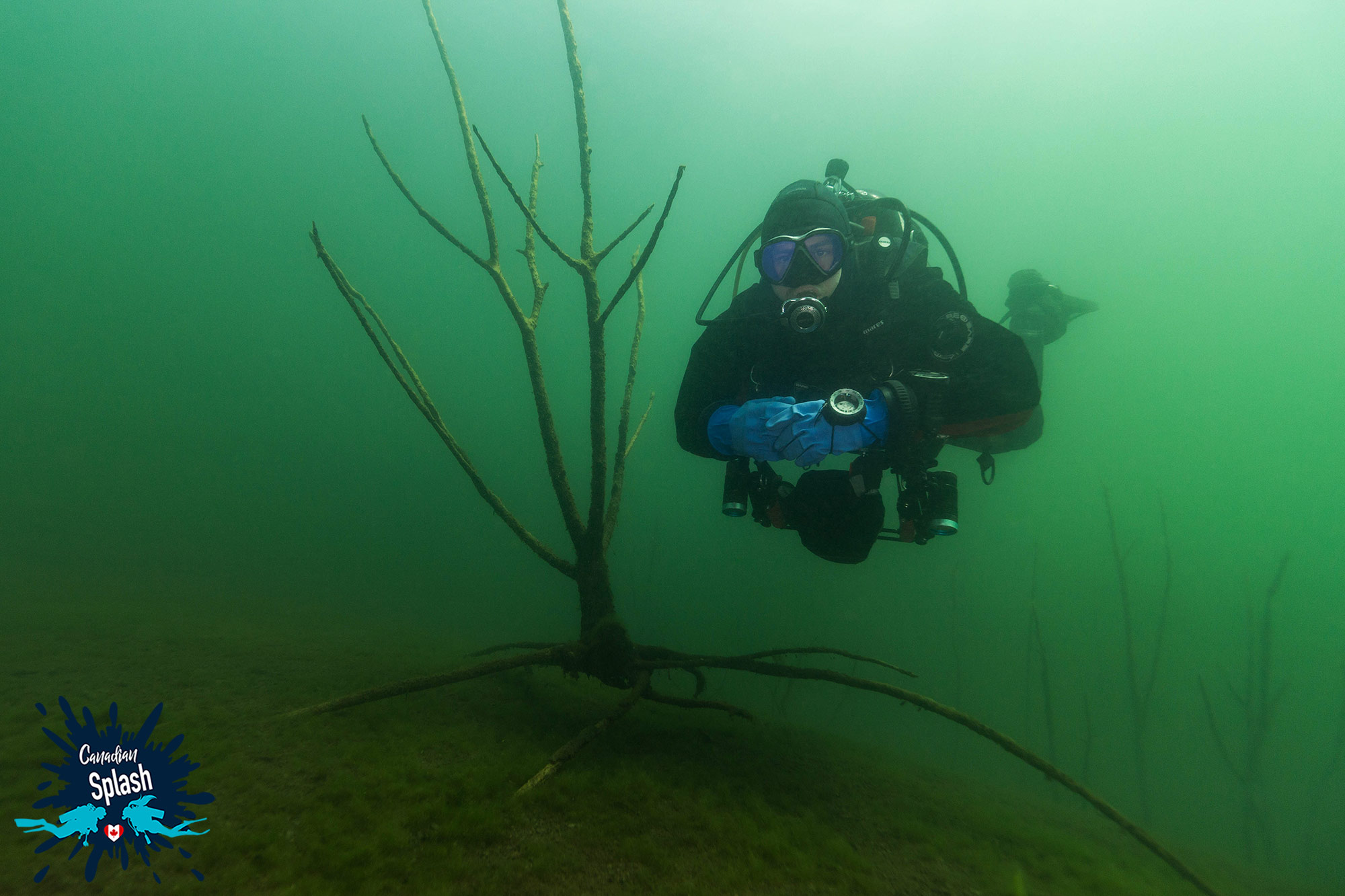
Cassels Lake, originally known as White Bear Lake, is a body of water located within the municipality of Temagami. The lake has a perimeter of 43 kilometers (27 miles), reaches a maximum depth of 37 meters (120 feet) and contains major fish species such as lake trout, pike, bass, walleye, whitefish and perch.
Our dive accessed to Cassels Lake was through the public boat launch located along Fox Run Road on the west side of the lake. We geared up on the wooden dock and took to the water on the right side of the dock heading towards the beaver dam and cottage at the tip of the bay’s peninsula.

The bay itself was shallow with lots of interesting macro life in the plant-filled shallows. Here perch and other silvery baitfish playfully chased and ate bugs, plankton and other bottom-of-the-food-chain snacks to appease their hearty appetites. It was surprising how aggressive these small fish could be to appease their hearty appetites. As a macro photography enthusiast, it was interesting to try and approach these glittering fish. They each seemed to have their own individualized temperament. Some were bold enough to approach the lens of the camera while others proved to be timid and reclusive seeking refuge behind the closest rock.

Out deeper there was less to see, therefore we didn’t spend too much time at depth save for deking beneath the thermocline.
The boat launch beaver dam was by far my favourite part of the dive. Here, a mass heaping of sticks littered the ground like leaves on a windy fall day. Between the clumps of sticks, the world was rich with organic life. Fish and plants made up the bulk of life on the dam, but there were also bugs and smaller invertebrates that kept me on my toes. I used most of my air in a mere 1.5 meters (5 feet) of water forever fascinated by the small things that make lake life thrive.

Where to Dive the Cassels Lake Boat Launch
GPS Coordinates: 47.06738512771806, -79.73282037683973
Address: Public Boat Launch, Fox Run, Temagami, ON, Canada
Using a dive flag, dive from the docks and head right towards the point.
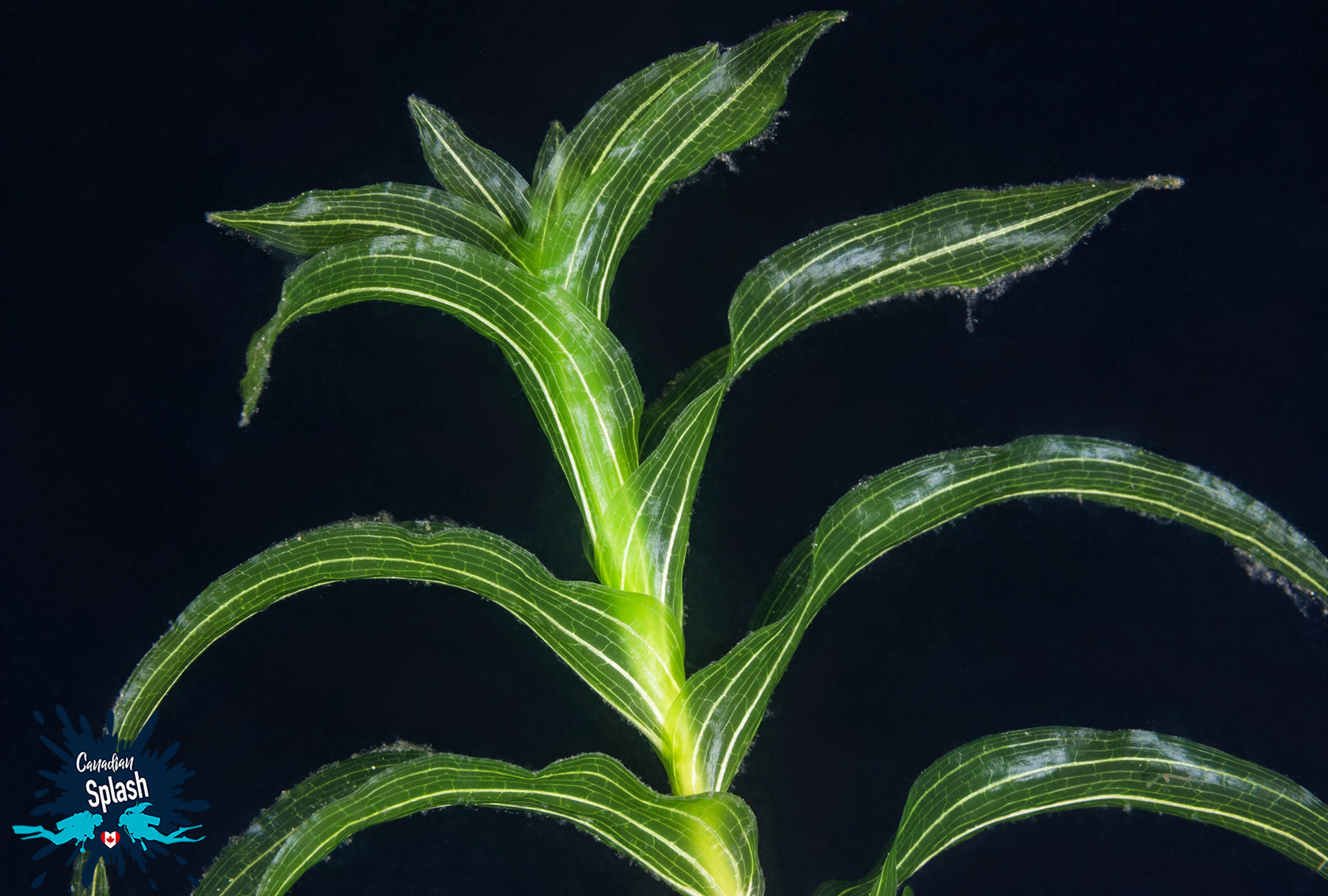
Hidden dive sites are everywhere and while the Great Lakes of Ontario may be a freshwater diving gem, our typical dive adventures push us beyond the boundaries of these world-renowned places. Northern Ontario can hardly compete with regions like Brockville and Tobermory, but there is beauty in the Temagami regions encompassing waters. Some of these sites and photographs are a testament to the unknown wonder existing in lesser-known lakes, rivers and quarries. It’s pretty incredible what a carefully trained pair of eyes and a little patience can find in these lush and productive environments.

Northern Ontario is a small and relatively unexplored scuba diving niche of the province. Have you ever been diving in this lake region and if so where did you go and what did you see? We would love to check out some new sites.
Writers Note: Part of this scuba diving post was sponsored by Ontario Parks as a part of our Canadian Splash photography and dive initiative. Additionally, this post may contain affiliate links. We will make a small commission if you make a purchase through one of these links, at no extra cost to you. See full disclosure and disclaimer policy here.
Want to explore more diving in Ontario? Take a look at H2O Ontario to discover more interesting Ontario-based dive adventures.


Mattawa is a far cry from wonderful diving, but given the region’s strong connection to its waterways - through the Indigenous people, Voyageurs and logging industry - Mattawa begs to be explored.

Do you want to try diving inside an aquarium? This unique Canadian location lets you experience scuba diving and up-close animal encounters like never before.

When it comes to getting outside and immersed in nature, Ontario Parks is at the top of the list. Not only do the parks boast magnificent nature, but it's hundreds of thousands of lakes make it a real treat for those who love the water.

From age-old shipwrecks to lukewarm water, the Saint Lawrence Seaway is considered one of the go-to diving destinations in Ontario.

Given the current state of the world, travel is restricted and people are checking out their own backyards. Local scuba diving can be a very different experience than the usual holiday diving adventure, but it is one well worth exploring.

Find out how a couple of scuba divers made a gigantic snow sculpture to try and turn the tides on plastic use in the city of North Bay.
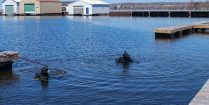
While most people were at home celebrating Mother’s Day, the North Bay Scuba Club donned dive gear and took to the water to clean up the local marina.

Newfoundland is a place chock-full of life, and scuba diving a whale boneyard is one of the many shore diving opportunities this Canadian province offers.

Tide pools are pools of water exposed at low tide and submerged by the ocean at high tide. They give non-divers a chance to glimpse the underwater world while remaining on land.

Located at the mouth of Fundy, there are many good reasons that the rocky coastlines of Grand Manan island would be ideal for scuba diving. Thanks to the ocean exposure and changing tides, the outer Bay of Fundy has some of the most dauntingly productive waters in Eastern North America.

Year after year Newfoundland enjoys large marine animal migrations, rich fisheries and icebergs floating down from Greenland, so it should come as no surprise that this province would pair well with scuba diving.

Saint Andrews by-the-sea may be small in size, but this summer town packs a pretty big dive punch for scuba divers willing to brave the Bay of Fundy's tides.

Do you enjoy cold water wreck diving? This dive destination will let you experience the best shipwrecks and scuba diving opportunities on the Canadian east coast.

When diving in Nova Scotia where do you even begin? Do you start in Halifax the province's capital or do you wander beyond to see what the surrounding area has to offer?

Sometimes finding a good dive spot is easier said than done. Shore diving around Saint John, New Brunswick is a testament to how unpredictable the Bay Fundy can be.

Submerging into the cold waters of Deer Island is one of the best ways to appreciate the vibrant array of color the Bay of Fundy hides beneath her surface.

Nova Scotia is full of cold water diving opportunities, particularly around shores of Halifax.
